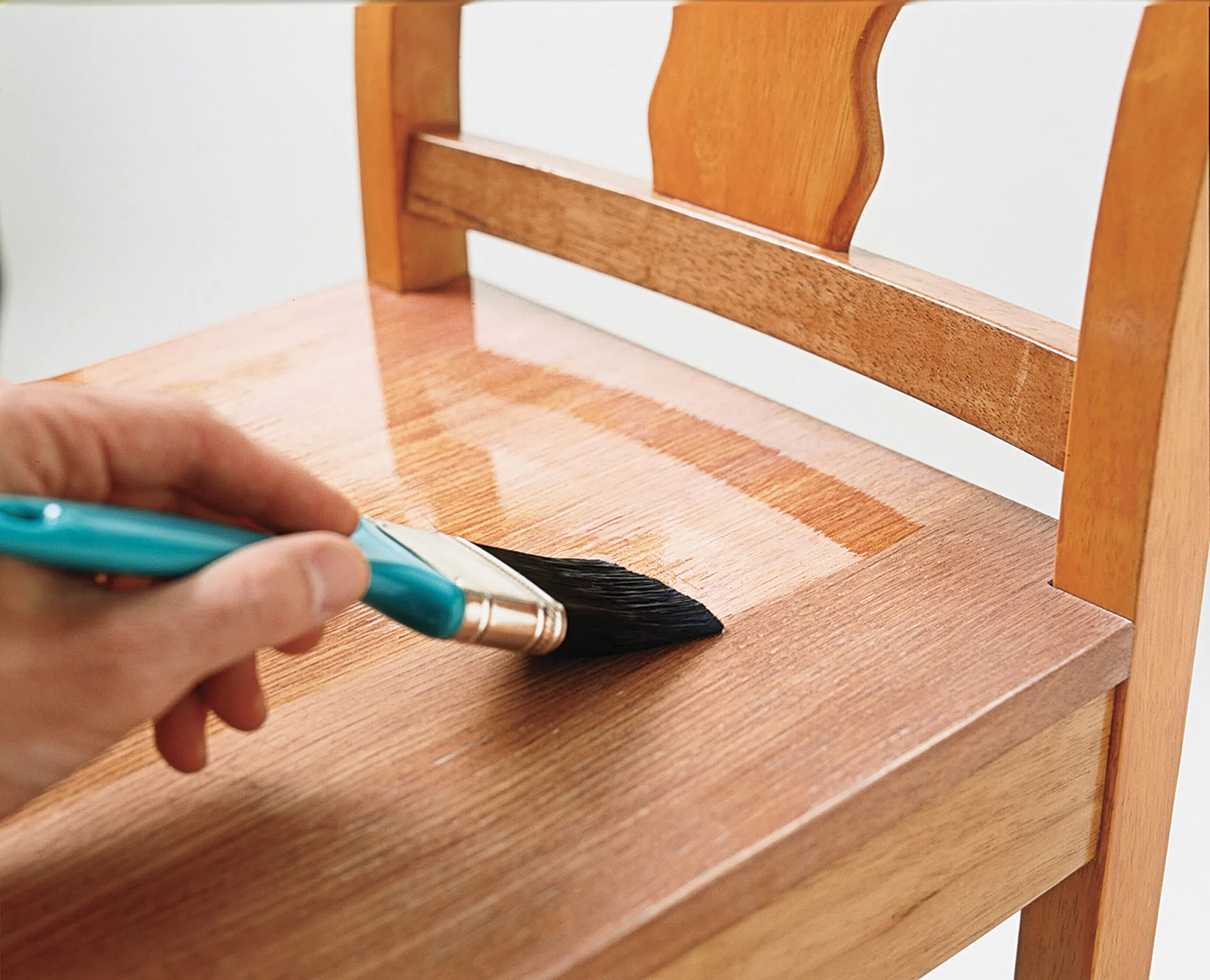If you’re coming to the end of a woodworking project, you may be thinking about adding an attractive lacquer coat to the finished item to improve the way it looks and to protect it – but you may also be considering adding polyurethane for an extra layer of protection.
But is this a smart idea? Can it help protect the lacquer beneath? And does it even work? To give you all the info you need, in this post, we answer the question, can you put polyurethane over lacquer?
What are polyurethane and lacquer?
Before we talk about whether you can use polyurethane over lacquer, let’s take a step back and think about what they both are to help us understand how they’re usually used and if they can be used together.
Polyurethane
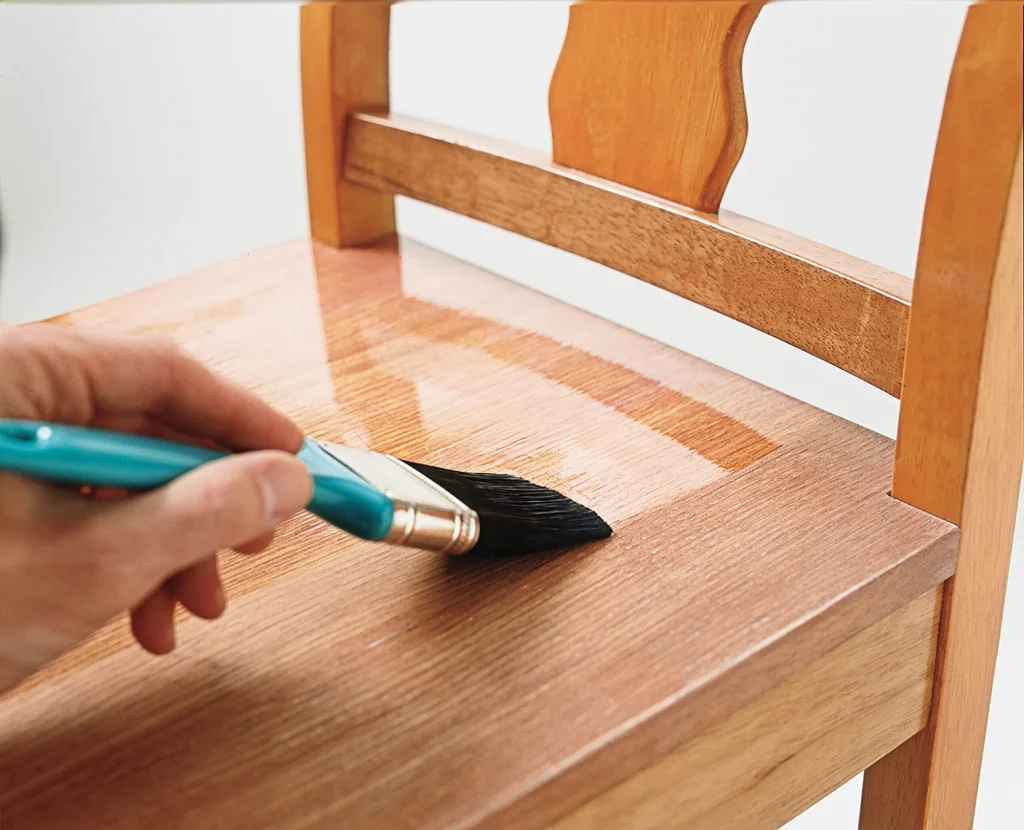
Image Credit: thisoldhouse
Polyurethane is a versatile plastic polymer that has a wide range of applications. It is used to make synthetic kitchen sponges, and it is also found in shoes, upholstery and plastic straps. And of course, it’s commonly used as a varnish to finish wooden furniture and floors.
Polyurethane comes in two main types – oil-based and water-based. When it is applied to a surface, it then dries as the water or oil content evaporates off.
Following this, it then cures – this means the surface hardens as the polyurethane reacts with the oxygen in the air.
Once dried and cured, it provides a tough and durable protective surface to the wood it covers.
Lacquer
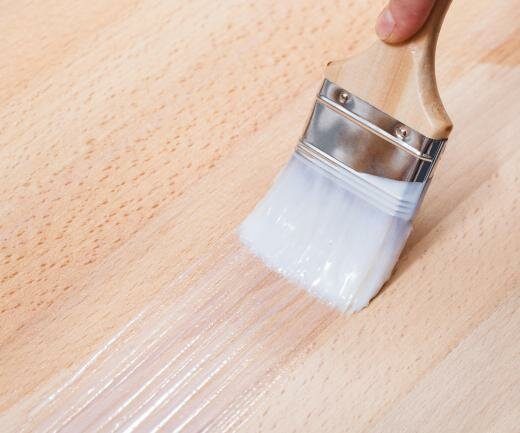 Image Credit: homequestionsanswered
Image Credit: homequestionsanswered
Lacquer is also a popular finish that is applied to wood surfaces to provide an aesthetically pleasing finish while also protecting the wood.
Lacquer techniques have been in use for millennia, with the first known example dating back to Neolithic China from around 5000–4500 BCE.
Traditionally, lacquers have been made from tree sap or the resin secreted by certain beetles, but nowadays, synthetic lacquers are far more common.
Like polyurethane, lacquer also exists as both oil-based and water-based versions.
Lacquer is known to produce particularly attractive finishes and can also help protect the wood surface it covers. However, it can be brittle compared to polyurethane and may also chip or peel off if not applied correctly.
Why you wouldn’t usually want to use polyurethane over lacquer

Polyurethane and lacquer are both considered “varnishes” or “finishes”, which means they are intended to be the top coat that’s applied to wood to protect it from water, mold, wood-eating insects and other general wear and tear.
This means that using them together is usually unnecessary – since lacquer is used to protect the wood, it would seem a strange idea to then add another layer of polyurethane over the top.
This is because it would essentially mean you are adding a second protective layer to protect the first protective layer.
Furthermore, by adding polyurethane over the top of lacquer, you would diminish the aesthetic appeal of the lacquer, which is known to be particularly beautiful when used well.
What all this means is that in normal circumstances, although you can use polyurethane over lacquer, it doesn’t necessarily mean you should.
Most of the time, adding two protective layers is just overkill, and it would also make the finished piece less attractive.
Some possible reasons why you still might want to Put Polyurethane Over Lacquer?
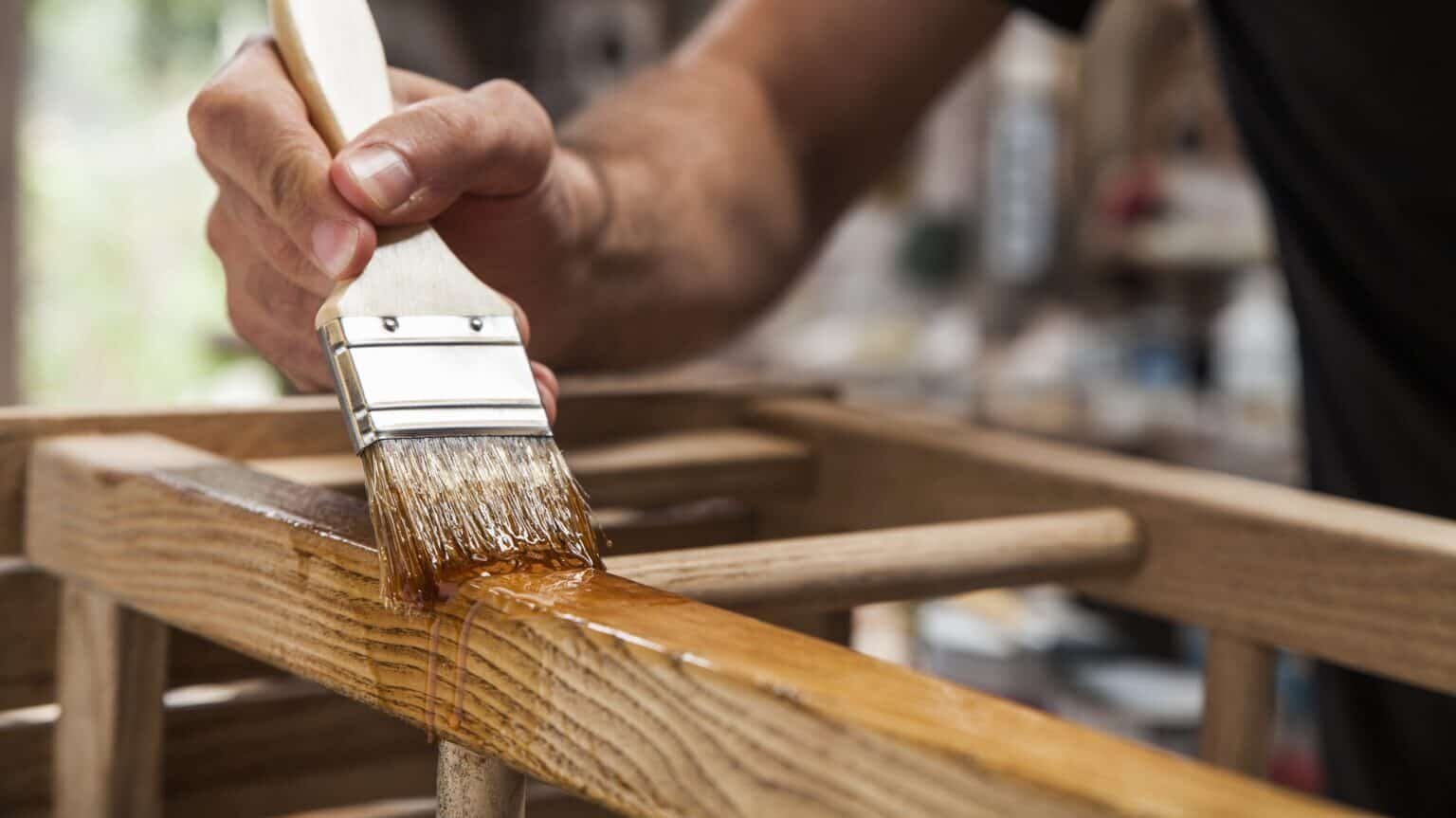 Image Credit: woodfinishingadvice
Image Credit: woodfinishingadvice
Having said all this about why it’s normally not necessary or advisable to use polyurethane over lacquer, there are still some situations where you might consider this option, and here are some examples:
1. If the item is for outdoor use
Lacquer is a great option for items that are destined for indoor use, but if you are giving a finish to something that will spend most of its life outdoors, lacquer might not stand up to the kind of wear and tear the item is likely to see.
However, you might still prefer the lacquer-style finish, and in this case, you can achieve something similar by first giving the item a lacquer finish and then protecting it with a few coats of polyurethane.
2. If you need the item to be extra-durable
Similarly, if you want to give an object a lacquer finish but know the object is going to see a lot of use, a good compromise might be to give it a lacquer finish first and then protect this with an outer layer of polyurethane.
3. To protect the surface against oils or acids
Polyurethane is more resistant than lacquer to acids and oils – especially if you choose an oil-based version. For this reason, if you want a lacquer finish but want to protect it against acids and oils, a polyurethane outer layer might be worth trying.
4. If you prefer a low-luster finish
Finally, if you want a lacquer finish with less luster, covering it with a layer or two of polyurethane might help you achieve this effect.
However, there are other ways to achieve something similar, so using polyurethane over lacquer might not be the most efficient way to create this look.
How to Put Polyurethane Over Lacquer?

For anyone who’s decided that polyurethane over lacquer is something worth trying, now let’s look at how to go about doing it.
Step 1. Lightly sand the surface of the wood before beginning
The secret to success when applying lacquer or polyurethane is to always sand the previous layer before applying the next, and the same applies to the bare wood when you start.
However, you don’t want to scratch the surface – you just want to slightly roughen it to give the first lacquer coat something to bind to.
This means you only need to use fine grit sandpaper – something like 220-grit or 320-grit would be ideal.
Step 2. Apply the first lacquer coat
Next, apply the first lacquer coat and leave it to dry. Once it’s dry, you can consider adding extra coats.
Step 3. Add more lacquer coats
If you want to add more coats of lacquer, you can, and at least a few coats are recommended – you just need to remember to sand each layer lightly as explained above before applying each new coat to give the new coat something to adhere to.
Step 4. Add the polyurethane coats in the same way
Next, add as many coats of polyurethane as you think you need, remembering to sand each layer lightly before adding the next.
Polyurethane takes longer to dry than lacquer, so make sure you give it enough time. Generally speaking, water-based polyurethane will be ready after about six hours, but oil-based polyurethane needs at least 24 hours before it will be ready for the next coat.
Tips for Putting Polyurethane Over Lacquer
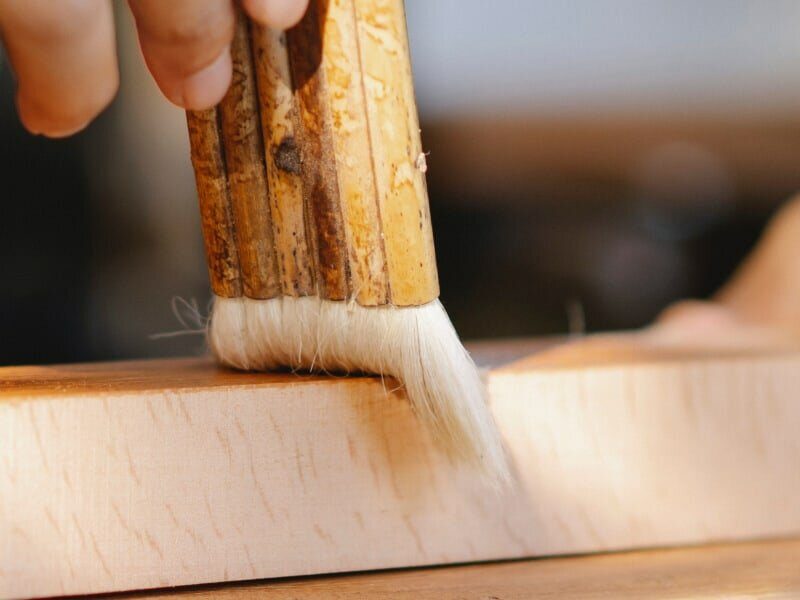 Image Credit: garagesee
Image Credit: garagesee
To finish, here are a few tips that will help you make a success of your project.
Consider skipping the polyurethane
Before opting for a polyurethane covering over lacquer, think about whether this is really something you want to do.
Modern lacquers are very hard and durable, and usually, they won’t need additional protection provided by an outer layer of polyurethane.
In addition, when lacquer is scratched or damaged, it can only be repaired by adding another layer of lacquer – but if you have covered it in a layer of polyurethane, you won’t be able to do this.
Remember, lacquer is designed to be a protective outer layer in itself, and most people would advise against using polyurethane over lacquer for the reasons we outlined above.
More than this, it requires a lot of extra time and effort for something that won’t necessarily produce great results.
Always sand between every layer
When applying either lacquer or polyurethane, you always need to give each layer a light sanding before applying the next coat – and the same is true when you are applying these two finishes one over the other.
Use the same type of lacquer and polyurethane
One important thing to remember if you’re going to make your lacquer and polyurethane work is that you must use the same type of polyurethane as you do lacquer.
This means if you use a water-based lacquer, you need to use a water-based polyurethane, and if you use an oil-based lacquer, you need to use an oil-based polyurethane – you can’t use one of one and one of the other because they won’t bind together correctly.
Think carefully about how many coats of each to apply
When applying lacquer and polyurethane, you also need to think about how many coats of each you need to apply.
When it comes to lacquer, you’ll usually need to apply at least three coats – although, for something that will see more use, you’ll need to use more.
As far as the polyurethane is concerned, at least two coats are required – but it can’t hurt to add one more if you want some extra protection.
Polyurethane over lacquer can be made to work
As we’ve seen, the technique of adding polyurethane over lacquer is not necessarily a great idea since lacquer looks great and does a good job of protecting wood on its own without any help.
However, if you decide to go ahead and try using polyurethane over lacquer, it can be made to work, and in theory, it should provide an extra level of protection to the lacquer layer beneath it.
